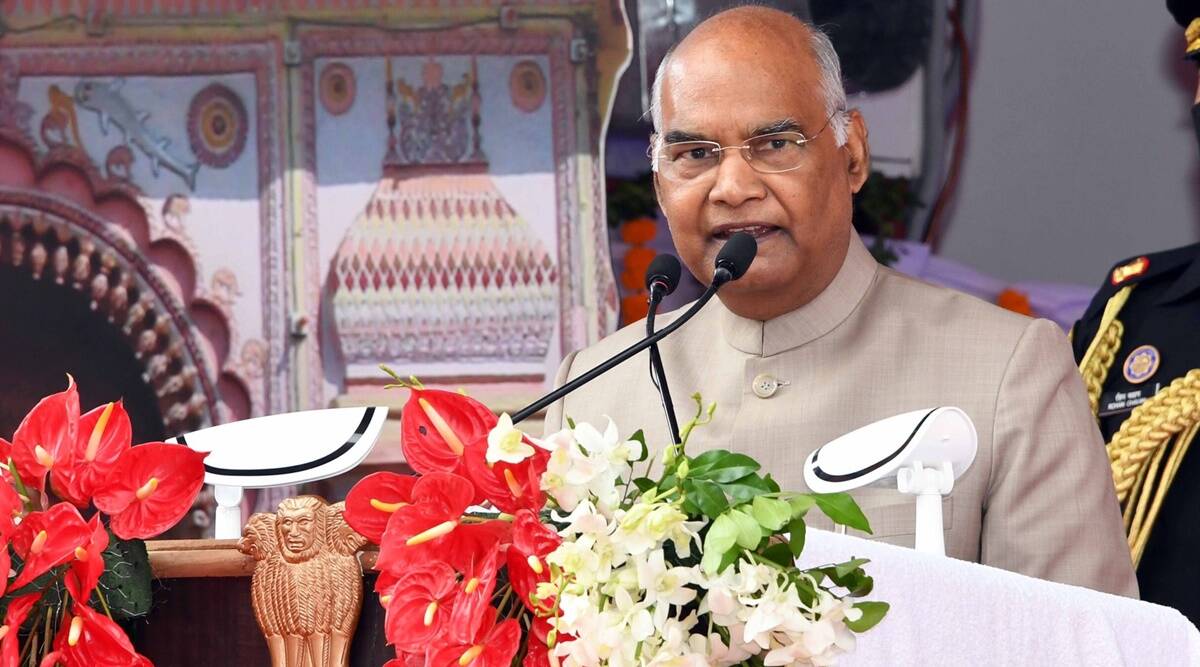LUCKNOW/AYODHYA,
Aug 29:
President Ram Nath Kovind today offered prayers to Ram Lalla, visiting the site where a Ram temple is being constructed in Ayodhya, a city which he said was nothing without the deity.
“Without Ram, Ayodhya is not Ayodhya. Ayodhya exists where there is Ram. Lord Ram resides permanently in this city, and hence in the true sense, this place is Ayodhya,” he said while inaugurating a Ramayan Conclave, shortly before visiting the temple construction site and offering his prayers.
The president was accompanied by his family members, Uttar Pradesh Governor Anandiben Patel, Union Minister of State for Railways and Textiles Darshana Vikram Jardosh, Chief Minister Yogi Adityanath, and his deputies Keshav Prasad Maurya and Dinesh Sharma.
They also offered their prayers to Ram Lalla amid chanting of shlokas by priests at the makeshift temple.
A shawl and a miniature replica of the upcoming Ram temple were also presented to Kovind who interacted with the priests briefly and planted a sapling.
Ram Lalla temple priest Acharya Satyendra Das said the president stayed in the temple for almost 5 minutes.
“The visit of the president with his family members went quite well. They had the ‘darshan’ of the lord, they offered flowers and performed aarti. He is the first president who has come to the temple to have a glimpse of Ram Lalla,” Das said.
Before visiting there, Kovind, who is on his first trip to Ayodhya after the landmark 2019 Supreme Court verdict paved the way for the construction of the temple, also offered prayers at the Hanumangarhi shrine, about 2 km away.
The president was presented with a pink-coloured turban at the Hanumangarhi temple.
Earlier in the day, the president reached Ayodhya by a special train from Lucknow on the last day of his four-day visit to Uttar Pradesh.
Speaking after opening the Ramayana Conclave and laying foundation stones of various projects of the Department of Culture and Tourism, the president said, “We should try to see Ram and Sita in everyone. Ram belongs to all, and Ram is in all.”
Apparently referring to the word ‘Ram’ in his name, Kovind said, “I feel that when my family members named me, they were possibly having the feeling of respect and affection towards Ram Katha and Lord Ram, which is seen in the common public.”
Elaborating further on Ayodhya, the president said, “The literal meaning of Ayodhya is the one who is impossible to wage a war against. Owing to the courage and power of Raghuvanshi kings Raghu, Dileep, Ajj, Dashrath and Ram, their capital was considered unconquerable. Therefore, the name of this city as ‘Ayodhya’ will always remain relevant.”
Highlighting the love of Lord Ram towards tribals, he said, “During his days of exile, Lord Ram did not call the armies of Ayodhya and Mithila to fight the war. He gathered the Khols, Bheels, Vaanars and formed his army. In his campaign, he included ‘Jatayu (vulture)’. He strengthened love and friendship with the tribals.”
Paying respect to the Ramcharitmanas, he said it instills hope, generates inspiration and spreads the light of knowledge.
“Ram Katha is enacted in many countries of the world. The Ramlila of Bali island of Indonesia is famous. Non-resident Indians have kept the Ram Katha and Ramlila alive in many countries including the Maldives, Mauritius, Trinidad and Tobago, Nepal, Cambodia and Suriname,” the president said.
He also referred to Ayutthaya, a city in Thailand. (PTI)
Trending Now
E-Paper


